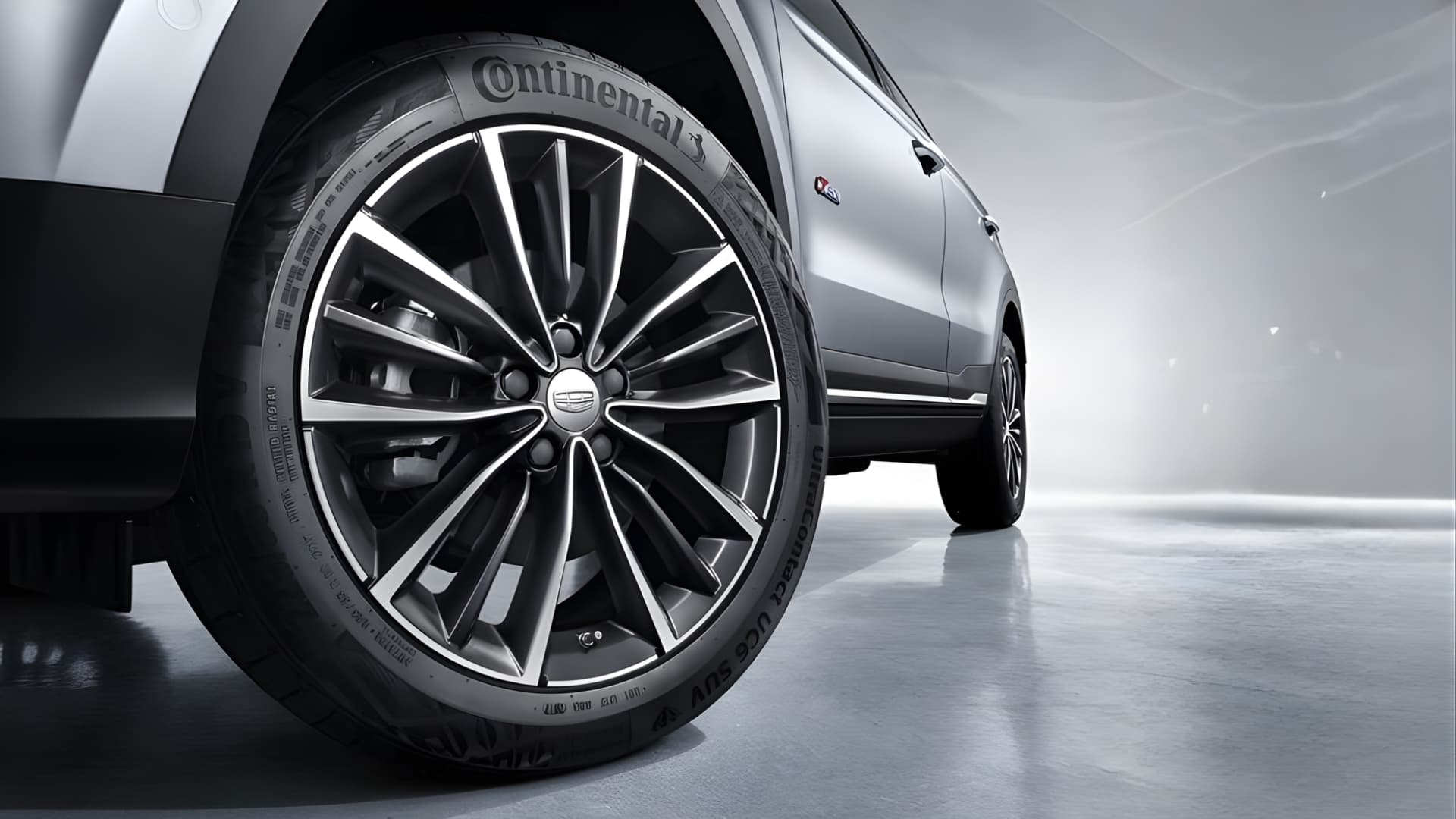
When preparing your car for different seasons, it's important to consider the unique challenges and opportunities each season brings. Each season can significantly impact your car's performance, longevity, and your safety.
In summer, the focus should be on keeping your car cool and functioning efficiently in the heat. This includes maintaining the air conditioning, protecting the interior from sun damage, and ensuring your engine and car's fluids and filters are in optimal condition to prevent overheating.
As autumn approaches, it's important to prepare your vehicle for the transition with maintenance tasks like tire inspections and rotations, as well as checking the health of your battery. The fall season often brings wet conditions, so ensuring good windshield wipers and properly functioning brakes is crucial for safety. Winter demands a more robust approach, with preparations for snowy and icy conditions. This includes equipping your vehicle with snow tires or chains, checking your antifreeze, battery, and heating system, and ensuring clear visibility in frosty conditions. Spring is a time for renewal, and giving your car a thorough cleaning after the harsh winter months is essential. This is also the time to check for potential damage caused by potholes, as well as inspecting your suspension, alignment, and tire condition.
Throughout the year, routine maintenance services on cars like oil changes, filter replacements, and tire rotations are important. Being prepared for unexpected roadside emergencies with items like jumper cables, a spare tire, and roadside assistance contact information is also crucial.
By adapting your car for each season, you not only ensure your safety but also enhance your overall driving experience, allowing you to enjoy the best of each season, whether it's a beautiful spring morning or a snowy winter day.
Tyre Care for Every Season
Tire care is crucial for vehicle safety and optimal performance in Australia, where the climate varies but generally does not include snow. Here are some adapted tips for Australian conditions:
Summer
- Heat Resistance: Summer in Australia can get extremely hot, affecting tire pressure and wear. Choose tires that are rated for higher temperatures.
- Tyre Pressure: Regularly check the tire pressure, as heat can cause the air inside the tires to expand, leading to overinflation.
- Tread Depth: Ensure the tread depth is adequate for wet conditions, as summer can also bring sudden downpours.
Autumn and Spring
- Change in Conditions: These seasons can bring rain and wet road conditions. Good tread depth is important for preventing hydroplaning.
- Regular Checks: Perform regular checks for tire wear and damage, as debris from storms and fallen leaves can affect road conditions.
Winter
- Wet and Icy Roads: Although snow is rare in most parts of Australia, some regions can have frosty mornings. Ensure tires have good traction for wet and potentially icy conditions.
- All-Season Tyres: In areas without extreme winter conditions, all-season tires are a suitable choice, offering a balance between wet and dry performance.
Year-Round Maintenance
- Regular Inspections: Check for signs of wear, cracks, or bulges in the sidewalls.
- Alignment and Balancing: Regularly check wheel alignment and balancing to prevent uneven wear.
- Rotation: Rotate tires as per the manufacturer’s recommendation to ensure even wear.
- Emergency Kit: Keep an emergency kit that includes a spare tire, jack, and tools.
By following these tips, you can maintain tire safety and performance in the varied Australian climate. Remember, regular maintenance and checks are key to extending the life of your tires and ensuring your safety on the road.
Battery Protection in Changing Climates
Caring for your car's battery is crucial, especially considering the impact of different climates on its performance and longevity. Both extreme cold and hot temperatures can strain your car's battery, so it's important to understand how to protect and maintain it in these conditions.
Winter Battery Care (cold weather)
- Cold weather can significantly reduce your car batteries capacity and drain its power. It's important to park your car in a garage if possible to limit exposure to cold temperatures.
- Let your car warm up before using all features, as this helps the battery to perform more efficiently in cold conditions.
- When its extreme cold, Regularly clean your battery to prevent corrosion, which is less likely if you've kept it clean during summer.
Summer Battery Maintenance
- High temperatures can lead to problems like corrosion, liquid evaporation, and a shorter battery life. It's important to check the electrolyte levels and only add distilled water if needed.
- Keeping your car in the shade and being aware of your fluid levels can help protect the battery.
- Clean the top of your battery to prevent corrosion and have a professional check it regularly, especially to ensure the alternator is functioning correctly, as it maintains the battery's charge level.
General Tips
- For both seasons, it's beneficial to have your battery tested regularly to ensure it's within the appropriate voltage range.
- Be proactive in your maintenance approach. Regular checks and cleanings can prolong the life of your battery.
- Keeping jumper cables in your trunk is a good practice, as they can be helpful in emergency situations where the battery fails.
Remember, the state of health (SOH) of your car batteries: battery decreases over time, and extreme weather conditions can accelerate this process. By following these maintenance tips, you can prolong the life of your car battery and avoid unexpected issues.
Wiper Blades and Visibility
Choosing the right wiper blades for your vehicle is crucial for maintaining clear visibility in all weather conditions. Recommended wiper blade models include Rain-X Latitude Water Repellency, Trico Flex and Maxx, Bosch Focus and Icon, and Michelin Endurance XT. These models are known for their effectiveness in the rain and keeping the windshield clean and clear.
For wiper blade maintenance, regular cleaning is important. You can use warm soapy water for cleaning, followed by a wipe-down with rubbing alcohol to remove dirt, oil and any residue. This process helps ensure the wipers function effectively and do not leave streaks on the windshield.
Typically, it's advised to replace wiper blades every six months or as soon as signs of wear are noticeable. This regular replacement ensures that the blades are always in good condition, providing the best visibility and safety while driving.
Overall, regular maintenance and timely replacement of wiper blades are key to safe driving, especially in adverse weather conditions.
Windshield Wiper Fluid Refills
It is important to ensure your windshield wiper fluid is kept at an appropriate level for clear and safe visibility on the road. This should be done approximately every 6-12 months or with each 3-6 washer fill ups. Monitoring and topping off wiper fluid can help keep a strong view in any kind of weather conditions while driving.
Lights and Signals: Staying Visible on the Road
Taking care of your headlights, vehicle’s lights and indicators is essential for safety on the road, especially in poor visibility conditions or bad weather. Maintaining headlights, signal and brake lights ensures that you can easily communicate with other cars and drivers around you to help reduce the risk of any accidents happening.
Headlight Maintenance
Headlight upkeep is paramount for dependable illumination on the road and increased security. It’s important to monitor headlights regularly to double check if any damage or dullness has occurred, making sure you exchange them when necessary.
To keep their brightness clear in all conditions, it’s helpful to use specific cleaning products designed specifically for headlamps care.
Signal Light Checks
Maintaining your signal lights is crucial for the safety of yourself and other drivers on the road. Any issues with visibility or operation should be addressed immediately to avoid any misunderstandings that could cause an accident. Inspecting these components regularly can help prevent such situations from occurring in the first place. Signal lights serve as a way to communicate intentions, so it’s important they remain properly functioning at all times for everyone’s well-being.
Brake Light Inspection
It is important to inspect your brake lights regularly in working order, to guarantee the safety of you and other drivers on the road. Check car's lights for signs of damage or dullness, and replace them when needed. Maintaining proper illumination with your brakes allows all motorists around you to be aware of what manoeuvres are being made by conveying a safe message that can help prevent accidents from happening. It is essential to take care of these lights so they remain functioning as intended at all times.
Fluids and Filters
Maintaining your car’s oil and filter levels is key for having a reliable engine. Oil changes, replacing filters, assessing the cooling system regularly as well as keeping up with windshield wiper fluid refills are all crucial steps to keep the motor running at peak condition throughout the year.
Oil Changes and Oil Filter Replacements
Routine oil changes and filter replacements are key for sustaining your vehicle’s engine performance and extending its longevity. It is advised to get an oil change for your car between 5,000-7,000 miles or replace it twice a year at the least—whichever comes first.
Keeping on top of these regular maintenance tasks can help your vehicle avoid potential motor issues while making sure that it runs smoothly.
Cooling System Check
A car’s cooling system is an important factor in maintaining the engine’s ideal temperature and avoiding overheating. Checking and servicing your vehicle’s cooling mechanism regularly can help prevent likely damages to the engine as well as ensure a seamless journey. To inspect your motorcar’s cooling unit, you should take these steps:
- Examine if there are sufficient levels of antifreeze or water added together (50-50 mix) before topping it off;
- Establish potential leaks or harm by visually evaluating the radiator;
- Check that all operations of its fan function correctly for optimal functioning results .
To guarantee efficiency on behalf of this feature, examining dirt build up within the fins attached to radiators must not be overlooked either - scrubbing with brush/air or warm air compressor will improve airflow preventing any sort of extreme heating from affecting your drivetrain subsequently delivering top performance at all times!
Braking Safely in All Seasons
Proper brake maintenance is essential to staying safe behind the wheel, no matter what weather conditions you’re dealing with. Whether it’s raining or icy roads, these tips can help guarantee a secure driving experience for all seasons. In this article, we’ll look at techniques for both wet roads and cold weather, braking, how to preserve your brakes in winter and when new brake pads need replacing.
Wet Weather Brake Tips
When driving in wet weather, it is essential to take care of your brakes. To ensure the best possible braking performance while facing rain and moisture, make sure to keep a safe distance behind other vehicles, avoid making abrupt stops and apply pressure slowly when pressing down on them. The proper maintenance of snow tires and brake systems during periods with bad conditions and wet roads will help prevent any accidents from happening.
Winter Brake Maintenance
As the winter season approaches, it is crucial to inspect the brakes of a car for optimal safety in cold and icy conditions. The hoses should be checked for signs of cracking or brittleness while listening out for any strange sounds coming from your braking system. Routine maintenance can help make sure that these components stay in working order as well during this time, which may come with difficult roads ahead. With regular care given to their brakes, drivers are better prepared before heading into a journey through winter elements!
Brake Pad Replacement Indicators
For optimal braking performance, it is important to be aware of when brake pads should be replaced. Depending on the type of car and how often you drive it, they can need replacing anywhere between 25,000 - 80,000 kilometres. Doing so regularly ensures that your vehicle’s brakes will remain strong in any driving conditions. Replacing them as needed guarantees a smooth ride for all passengers throughout the year.
Protecting Your Car's Interior and Exterior
It is important to look after your car’s interior and exterior for maximum appearance as well as retaining value. This includes how you wash it, the way in which you take care of its inside spaces and cleaning them regularly, plus ways that protect the paintwork throughout every season. To achieve this goal, we will address washing and waxing techniques, necessary methods for caring for its interiors too.
Car Washing and Waxing
To ensure that your car maintains its good looks and is shielded from weather-related destruction, regular cleaning and waxing should be done. Using a shampoo with an alkaline level suitable for the job along with a soft cloth to clean it can make your car's paint shine get you the best results. It’s important to start at the top of the wash your vehicle while washing downwards in order to complete this task effectively before drying off using another fabric on completion. By doing such thorough maintenance and treating regularly, both sun damage or bird droppings will not affect your cars bodywork durability over time due to external conditions like wind and rain, etc.
Interior Care and Cleaning
Maintaining the tidiness of your car’s inside is essential for an enjoyable ride. Here are a few methods to help keep it in optimal shape: regular vacuuming of upholstery, wiping down surfaces and eliminating spots with all-weather mats plus preserving materials via car protection accessories. Any water damage or unpleasant smells should be attended to as soon as possible by checking rubber linings on doors and using fabric refresher products to ensure that your vehicle has a fresh atmosphere within its interior.
Paint Protection Methods
It’s necessary to maintain the visual appeal and value of your car by protecting its paint. Waxing and ceramic coating are two means through which you can do this, with wax forming a shielding guard against scratches while ceramic covering provides an ultra-thin layer that holds back oxidation, fading, and discoloration due to wear and tear.
Regularly utilizing either one or both methods will help preserve your vehicle’s paint job no matter what time of year it is.
Preparing for Seasonal Road Trips
For any season, making sure your vehicle is ready for road trips is essential. Taking a few precautions can help you prevent unpleasant surprises such as breakdowns during the journey. The following tips will guide how to both prepare your car and make necessary adjustments depending on the season brings if it’s summer or winter driving conditions.
No matter what time of year, weather-related changes need to be taken into account when getting cars ready for travel, this holds true particularly for warm up in regards to car maintenance checks ahead of departure. If it’s going to be cold, fluids should be filled properly for warm up. Similarly, tires must have an appropriate air pressure according to their season use (summer/winter). Ens.
Summer Road Trip Preparation
Before taking a summer excursion by car, inspecting your vehicle’s tire pressure, brakes and cooling system is an important step to prepare for a safe and enjoyable road trip. It’s also helpful to have preparedness items like an emergency first aid kit, spare wheel/tire, as well as lots of water in order to prepare to tackle any surprises that may occur while traveling.
Winter Road Trip Tips
Before embarking on a winter or ice out excursion, you should inspect the tires and brakes of your car as well as other essential systems for safe travel in cold or icy weather. To protect yourself Bolster peace of mind, it’s wise to pack an emergency kit with things like blankets, a flashlight and non-perishable snacks. Taking these precautions will give you the confidence needed to fully enjoy your journey.
Summary
Following the guidance provided in this guide, and with the expert assistance of Westside Auto Service, you can ensure that your car is well-prepared for any season and weather condition with our professional car serving in Perth. Proper vehicle care is more than just maintenance; it's crucial for the longevity of your car's paint, and for ensuring safety on the road, whether it's during hot summers or chilly winters.




